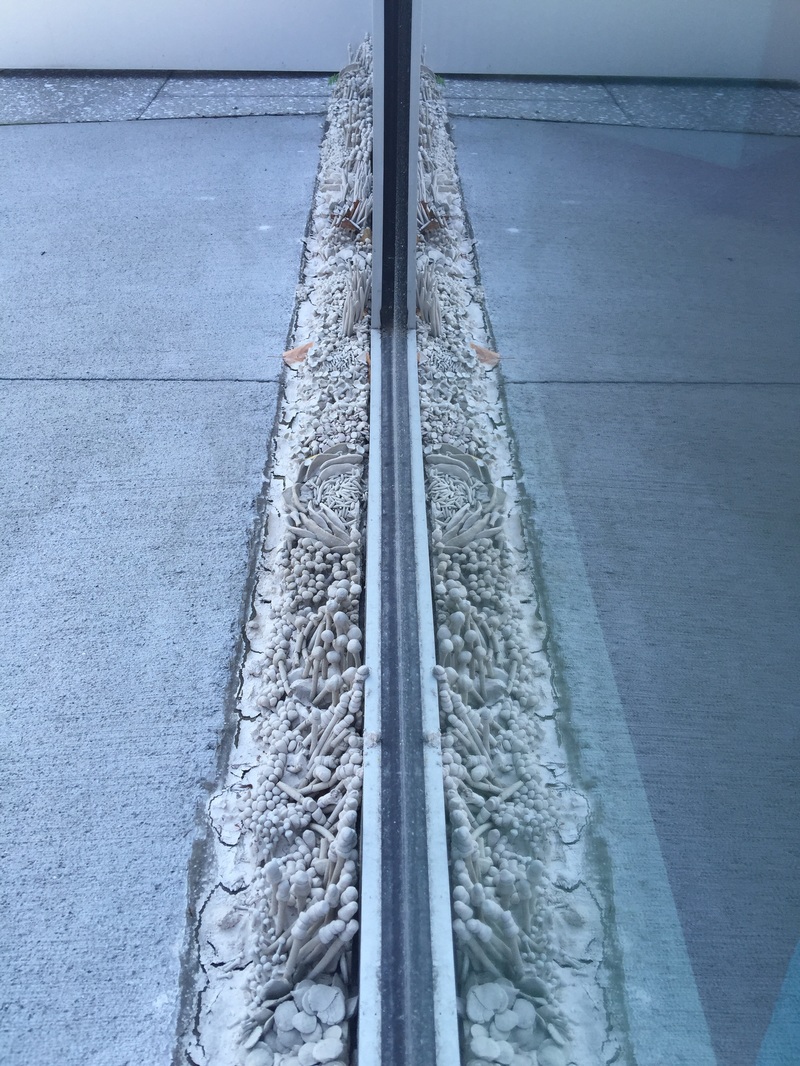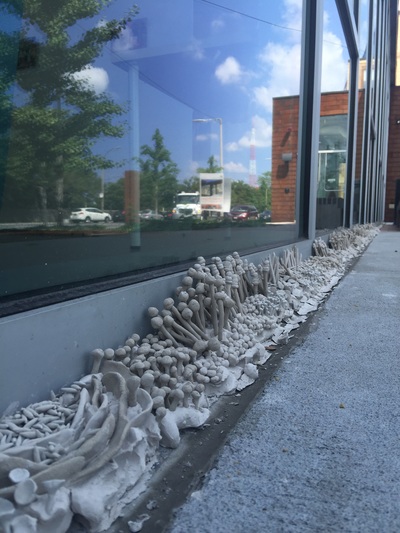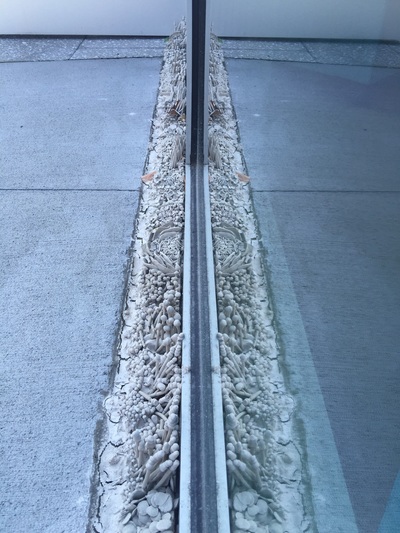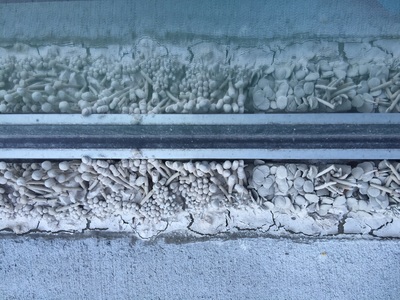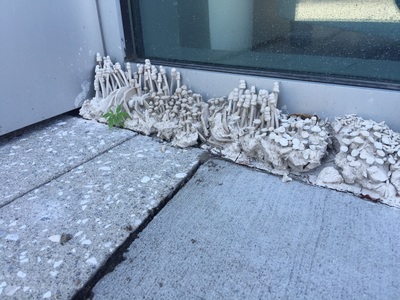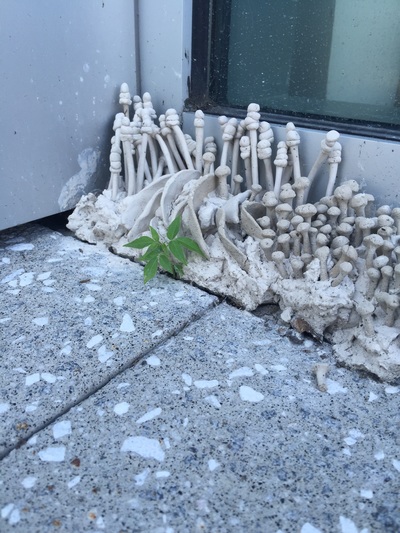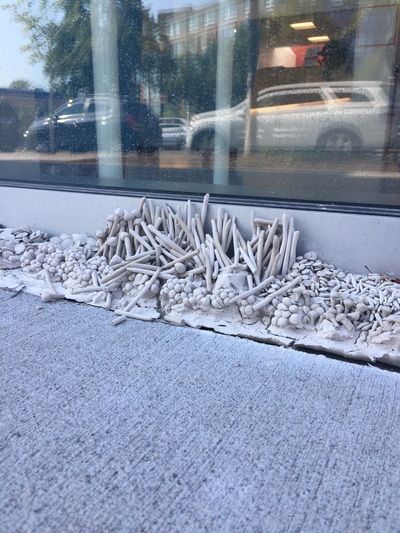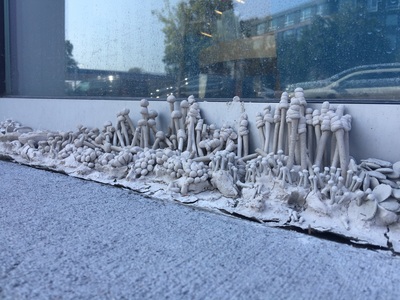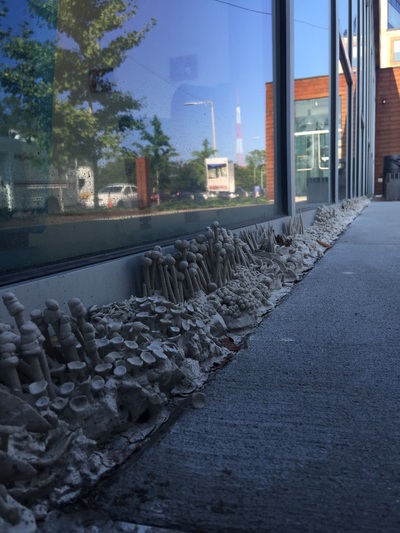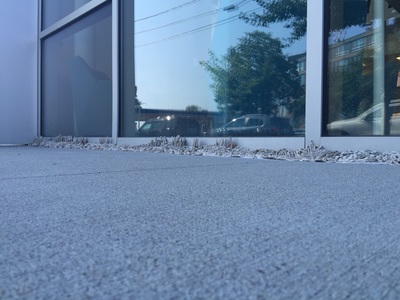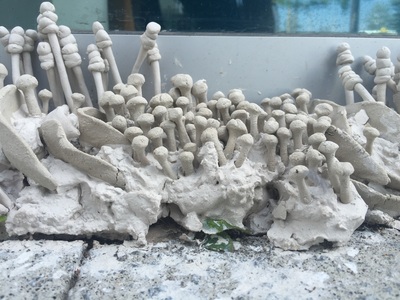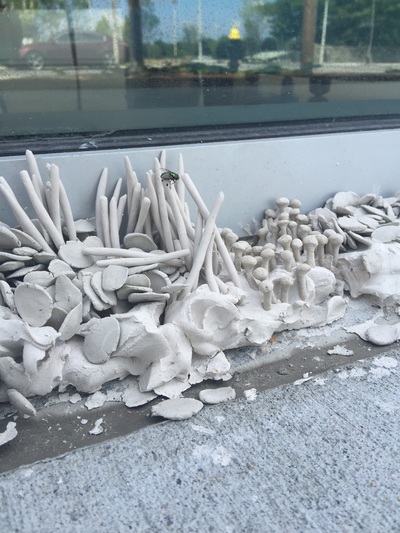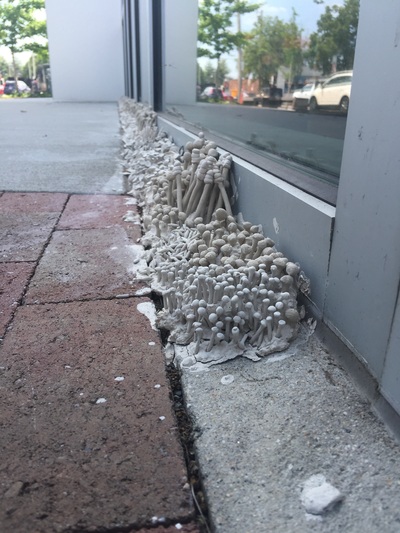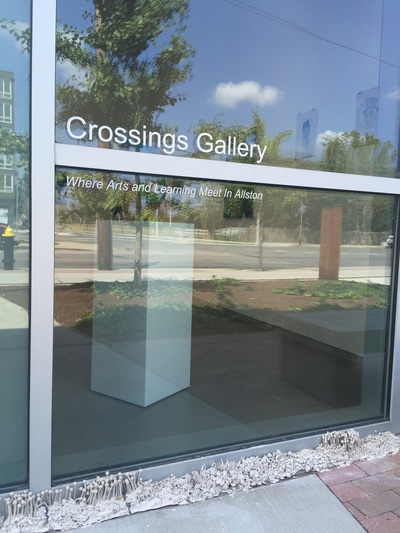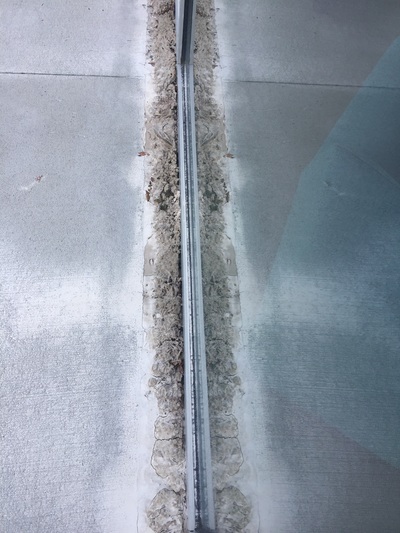Growth II, unfired clay, 2016
Crossings Gallery at the Harvard Ed Portal, Allston, MA
Image Credit: Elizabeth Plakidas
The ability of certain organisms to take root and grow in what may seem inhabitable is amazing adaptation. Although we control where we pave, plant, and groom in our landscapes, there are uncontrollable factors present. The changing winds can carry seeds and spores from one area to another. An insect can spread different pollens from plant to plant. This cross pollination is beneficial for communities, increasing diversity and survival. A thriving microcosm maintains a balance and recycles its resources. This unfired clay microcosm has a finite lifespan, susceptible to the elements and outside interactions. It too will be recycled to bring new life into the world.
Crossings Gallery at the Harvard Ed Portal, Allston, MA
Image Credit: Elizabeth Plakidas
The ability of certain organisms to take root and grow in what may seem inhabitable is amazing adaptation. Although we control where we pave, plant, and groom in our landscapes, there are uncontrollable factors present. The changing winds can carry seeds and spores from one area to another. An insect can spread different pollens from plant to plant. This cross pollination is beneficial for communities, increasing diversity and survival. A thriving microcosm maintains a balance and recycles its resources. This unfired clay microcosm has a finite lifespan, susceptible to the elements and outside interactions. It too will be recycled to bring new life into the world.

